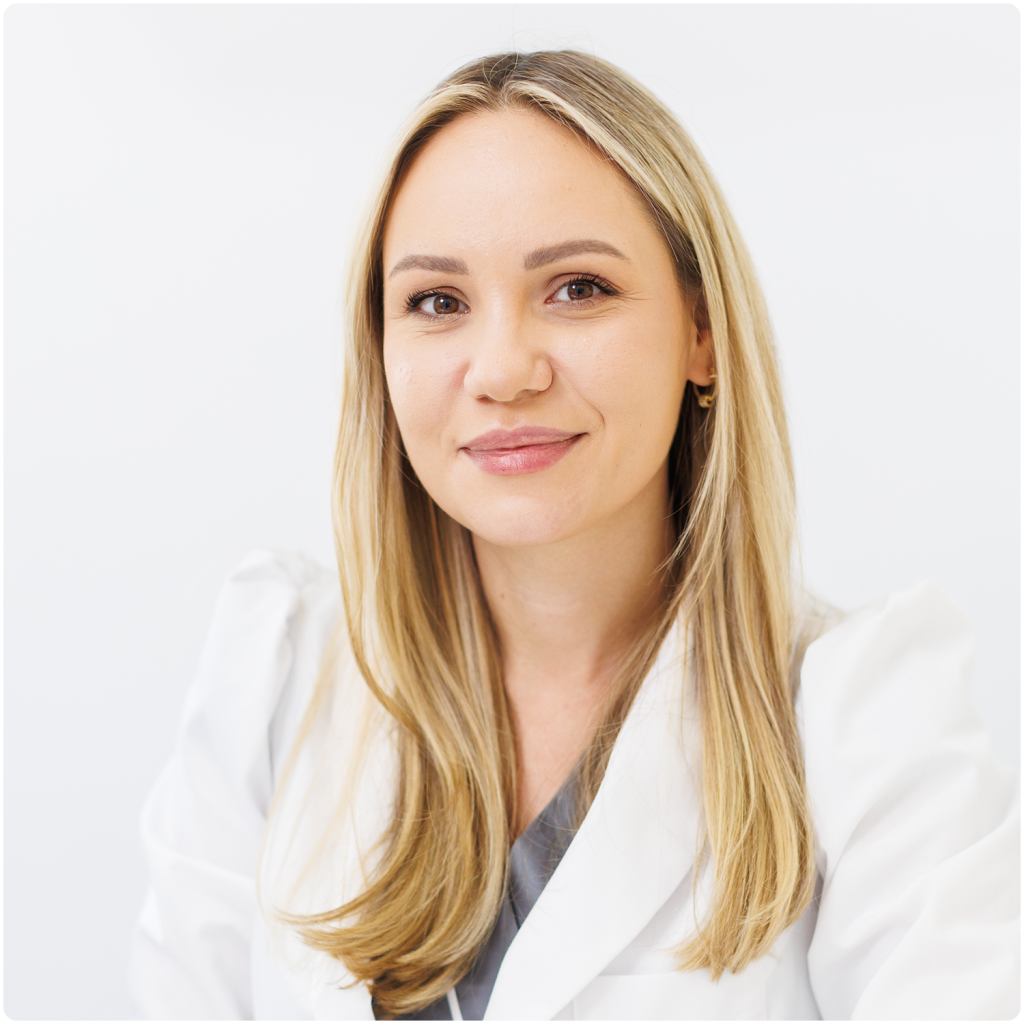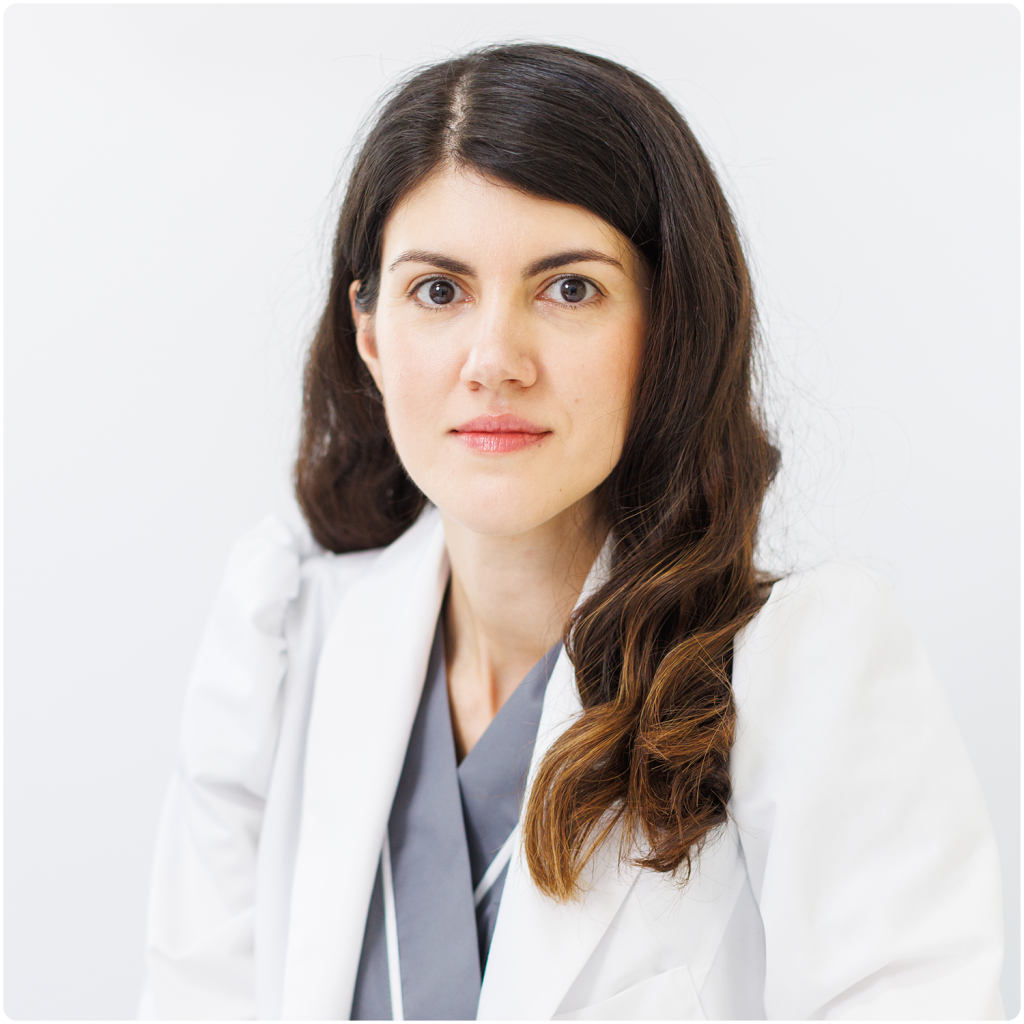Alopecia is not only a medical problem, but often poses psychological and social problems, especially for women.
Hair loss (alopecia) in women
Modern and effective treatments
Who are we talking to?
If you are experiencing hair loss, i.e. constantly losing more than 150 strands per day, which can be noticed when washing or styling your hair, we invite you to visit us in SKINMED®! Because health is not a form of pampering, and you have the right to enjoy the way you look at any age. We give you the attention and care you need!
Why choose SKINMED® experts?
Because they have the most effective and safe resources to make your hair healthy and rich! As SKINMED® experts we specialize in the diagnosis and treatment of scalp and hair skin conditions, with the most effective diagnostic and treatment technologies available to achieve the best and safest results for you. We are also available to explain to each individual patient the importance of scalp and hair care and provide the knowledge and resources to do so.
Benefits of alopecia diagnosis and treatment in SKINMED®
What is alopecia and what symptoms do we treat?
Hair loss, medically called "alopecia", can affect up to a quarter of women during their lifetime. Physiologically, between 50 and 100 hairs are lost per day, which is a natural rate of regrowth, but significant hair loss occurs when more than 150 hairs are consistently lost per day.
SKINMED® specialists carry out a correct diagnosis, according to which the treatment protocol is established. Among the troublesome symptoms that can be improved are:
How we diagnose alopecia in SKINMED®?
Alopecia can have multiple causes, so several steps may be needed to diagnose this condition:
Tricoscopy
performed with the TrichoLab Fotofinder, is the dermatoscopic evaluation of the scalp, a completely non-invasive procedure that is used by the dermatologist for the diagnosis and therapeutic management of scalp disorders.
TrichoLab Fotofinder uses a high-performance digital camera and a digital dermatoscope to quantify the number of hair follicles, follicular units, degree of vascularisation, etc. The images taken are sent to the Fotofinder Trichology Laboratory in Germany where they are examined by a specialised team. Following the final diagnostic report, the treating physician determines the treatment.
Scalp biopsy
can be a useful tool for assessing hair loss when the diagnosis is uncertain. It helps us to distinguish scarring alopecia from non-scarring alopecia and can provide information that further narrows the differential diagnosis. The biopsy is performed under local anaesthetic, the tissue is removed by the doctor and then sent to the laboratory for examination by the pathologist.
What therapeutic options are available for treating hair loss?
Depending on the causes of hair loss, the doctor will recommend topical treatment with minoxidil, corticosteroids, finasteride, immunomodulators, etc., hormone therapy, hormone therapy with proprietary plasma enriched platelet mesotherapy of the scalp, intradermal cortisone injection, hair transplantation or low level laser therapy (LLLT).
See details
It is a medical procedure to rejuvenate the scalp by restoring its structure using growth factors (substances in the body that cause cell regeneration). It is an injectable treatment based on the patient's blood.
See details
Mesotherapy is a non-surgical, minimally invasive method involving the direct administration, by injection, of a complex of pharmaceutical substances (vasodilators, vitamins, bioactive substances, etc.) tailored to each patient and each particular form of alopecia.
See details
Microneedling is a form of mesotherapy, which is performed with a specialised device instead of the traditional syringe. It is a device that uses an 11-needle system that is easy to remove, hygienic and very economical.
The benefits of mesotherapy for the scalp
Doctors EXPERT in the diagnosis and treatment of alopecia
In SKINMED®, you will find highly experienced medical specialists working with the latest results of medical research on prevention and treatment, using state-of-the-art medical equipment and products. We look forward to meeting our doctors for a treatment tailored to your needs!
SKINMED experience and technology®,
for the best results!
Advantages SKINMED®
Experience
- Over 19,000 patients treated in the clinic
- Over 300 new patients every month
- Over 20000 treatments per year
Credits
- FOTOFINDER-accredited Centre of Expertise in the Diagnosis and Treatment of Skin Cancer
- ALMA LASER accredited laser treatment centre of expertise
- ALLERGAN accredited centre of expertise in Aesthetics and Medical Injecology
Safety
- Only world-class accredited technologies
Other treatments you might be interested in
Frequently asked questions
What is alopecia in women?
Alopecia in women is a hair loss condition that can affect women of all ages. It occurs when the immune system attacks hair follicles, causing hair to fall out in patches or thin completely.
What are the common causes of alopecia in women?
The most common causes of alopecia in women include genetics, stress, hormonal changes, medication side effects and autoimmune disorders.
Can alopecia be treated in women?
Yes, there are treatments available for alopecia in women, such as topical medications, oral medications and hair transplantation. It is important to talk to a dermatologist or hair loss specialist to determine the best treatment option for you. Minimally invasive injectable therapies such as proprietary plasma therapy and mesotherapy, performed in a combined protocol by SKINMED® experts, are also very helpful with scientific studies.
Are there natural remedies to treat alopecia in women?
Although there are no guaranteed natural remedies for alopecia, some people have had success using treatments such as essential oils, supplements and scalp massages. It's important to talk to your dermatologist before trying any natural remedies, as they may not be safe or effective for everyone.
Is alopecia in women permanent?
Alopecia in women can be temporary or permanent, depending on the cause and the treatment plan. Some women may experience regrowth after treatment, while others may experience full or partial hair loss.
Can female alopecia be treated?
Yes, if it has a detectable cause that can be corrected, it is a treatable condition. There are patients who associate low serum iron, and hair loss is the manifestation. In this situation, correction of the serum iron may reverse the hair loss. Thyroid conditions are also associated with this manifestation and endocrinological treatment, following specialist diagnosis, treats effluvium telogen, transient hair loss. Correct diagnosis is the key to treatment, and SKINMED® experts have all the necessary diagnostic tools at hand!
What is the rate of hair growth?
Hair passes from the growth phase - called anagen - into the phase of physiological shedding and fall - called telogen. Naturally, 85-90% of hairs are constantly in the growth phase - anagen, which can last for terminal scalp hairs between 2 and 8 years. A short transition phase follows, then the hairs will enter the telogen phase, in which they will stay between 2 and 4 months, at the end of which they will shed from the scalp. When this balance is disturbed, thinning and sometimes thinning of the hair occurs.
How many types is alopecia?
The most common types of hair loss in women are anagen effluvium, telogen effluvium and androgenetic alopecia.
Anagen effluvium is determined by medication such as chemotherapy, which causes hair loss in the anagen phase, with significant thinning and thinning.
The 2 most common hair loss conditions in women are telogen effluvium and androgenetic alopecia.
Physical or emotional stress, drastic diets with micronutrient, vitamin or protein deficiencies, pregnancy, breastfeeding, some medications or even certain medical conditions such as those of the thyroid gland are often triggers for a telogen effluvium, correcting the causes plays an extremely important role in the treatment of hair loss.
Androgenetic alopecia in women often appears differently from men, almost always starting in the vertex, with less damage in the temporal and frontal areas.
The hairs become progressively cooler and often thinner, often leaving the scalp visible in advanced cases.
The causes of androgenetic alopecia are represented by genetic inheritance and hormonal factorssuch as excess androgenic hormones (polycystic ovary syndrome, ovarian tumours or even certain hormone treatments) or estrogen deficiency occurring at the onset of menopause. Statistically, over 35% of women will experience androgenic alopecia at menopause.
Another form of alopecia common among postmenopausal women or women with certain conditions such as polycystic ovary syndrome or ovarian tumours is non-catratic alopeciaalso called "Female pattern hair loss". Visible thinning of hair at the frontal scalp and vertex results from a progressive decrease in the ratio of terminal hairs to shorter, thinner vellus hairs in the affected areas, a process known as follicular miniaturisation. Unlike many cases of androgenetic alopecia in men (male pattern hair loss), terminal hair loss in the affected areas is usually incomplete and the frontal hairline is often sparse.
Other causes of hair loss in women are autoimmune alopecia such as alopecia areata, inflammatory ones found in lupus, lichen planus, infectious alopecias (folliculitis decalvans) or non-inflammatory ones such as fibrosing frontal alopecia.
For a correct diagnosis, a specialist consultation to the dermatologist, often supplemented by a series of blood tests (usual, vitamins and minerals, hormones) and a trichoscopic examination - an imaging, non-invasive method of investigation.
In rare cases these will be supplemented by a scalp biopsy, often when the patient is experiencing a form of scarring alopecia.
Treatment of alopecia in women is complex, adapted to the clinical form. It can consist of both local topicals, correcting triggers where possible, and state-of-the-art treatments such as mesotherapy or plasma therapy.
What are the risk factors for alopecia?
The causes of alopecia include:
- Genetic predisposition
- Thyroid disease
- Autoimmune diseases such as thyroiditis, diabetes mellitus, vitiligo, lupus erythematosus, dermatitis herpetiformis, etc.
- Iron deficiency anaemia
- Emotional stress
- Recent surgery
- Vitamin deficiency
- Certain medicines
- Radiotherapy
- Chemotherapy
- The period after birth.
How long does it take to get the trichoscopy results?
The result is obtained in about 2 weeks.
How long does trichoscopy take?
The time needed to carry out this assessment is about 20 minutes.
When is trichoscopy used?
Trichoscopy is used when the patient experiences marked hair loss, with or without hair thinning/disappearance, for the diagnosis of scarring or non-scarring alopecia: androgenetic alopecia, alopecia aerata, telogen effluvium, tinea capitis, trichotillomania, lichen plankillaris, lupus erythematosus.
Your dermatologist recommends a trichoscopic evaluation before and after the treatment in the clinic to be able to objectively assess the results.
When is a biopsy necessary?
Scalp biopsy is performed to confirm the diagnosis in all patients with scarring alopecia. Scalp biopsies are not usually performed for the diagnosis of hair disorders because in this case microscopic examination of the hair is used. However, in genetic structural hair disorders, abnormalities may also be evident when the intrafollicular portion of the hair is seen on histological examination.
How is a scalp biopsy performed?
The scalp biopsy is performed under local anaesthesia, usually with xylin 1% or lidocaine 1%, which is injected intradermally. Next, using a 4-6 mm round preducel (punch), the doctor removes tissue from the scalp and sends it to the laboratory for examination by the pathologist. The lesion formed is closed with skin sutures and bandaged with a sterile dressing for 1-2 weeks, depending on the area sampled. Afterwards, the patient returns to remove the sutures as indicated.







